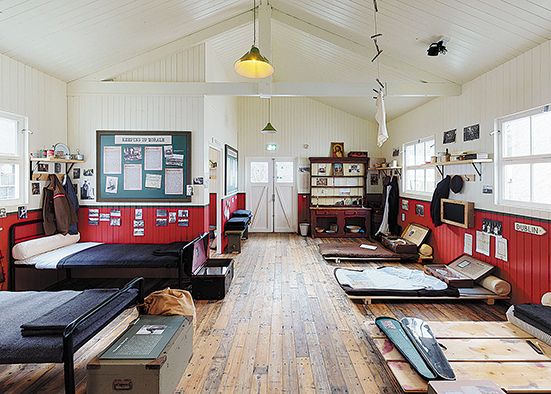Replica First World War hut in museum removal
Replica First World War hut in museum removal
14 June 2023

A REPLICA of a First World War Armstrong hut which mirrors those which had been in place at Ballykinlar camp is to be removed from its base at the Down County Museum.
Opened to wide acclaim two years ago at the English Street complex in Downpatrick, the Ballykinlar history hut experience was hailed as a major new tourist attraction, with the £150,000 replica made possible with financial support from the European Union.
And while the structure was always going to be a temporary facility, local politicians have this week rubber-stamped a proposal to dismantle it, with its historic contents retained for use in a potential future exhibition.
The huts were first built to house 4,000 Belfast men training with the 36th (Ulster) Division for active service on the Western Front, including at the Battle of the Somme in July 1916.
The huts later housed 1,800 republican internees who were arrested all over Ireland during the Irish War of Independence in late 1920 and 1921, with the soldiers in 1914 and the internees in 1921 given the same beds, made from three planks, with four army blankets to sleep on.
The original 60ft by 20ft timber huts, clad with corrugated iron, housed evacuees from Malta, American GIs and German prisoners of war during WWII World War Two and also sheltered Hungarian refugees in 1957, after the Russian invasion of Hungary.
The last huts were dismantled in Ballykinlar in 2012 when local man Andrew Carlisle recorded how one was built and saved hundreds of artefacts from the sand underneath and donated them to the Downpatrick museum.
Local historian Philip Orr’s book, published by the museum entitled ‘Ballykinlar Camp, The First 70 Years’, was an inspiration to museum staff to recreate an Armstrong hut in the courtyard, in order to tell the human stories of its many occupants, engaging world-wide with families of soldiers, prisoners, evacuees and refugees formerly at the World’s End Camp.
The circular visit to the hut includes sections on ‘World War One’, ‘Internment’, ‘Between the Wars’ and the ‘World War Two’, with recreated beds and sets, each with a story to tell.
Despite the hut’s popularity with visitors, politicians have been told the structure is “approaching the end of its life cycle” and that formal planning permission for it expired last year.
A successful application was made to extend planning approval on the condition that the hut would be removed in its entirety by 2025 with the land it sits on in the courtyard area in front of the Governor’s Residence restored to its former condition.
Politicians were told at Monday night’s meeting of Newry, Mourne and Down Council’s Enterprise, Regeneration and Tourism Committee that the replica hut’s condition has deteriorated over the ast two years.
Council officials said while it was designed as a temporary structure, its deterioration has been accelerated due to excess humidity during last autumn and winter.
In addition, they say there is no defined access path for visitors around the museum which has been identified as an access issue.
The local authority’s estates section is currently drafting drawings to establish a pathway, with councillors told this cannot happen until the hut is removed and the site restored to its previous state.
All contents and current display items in the hut will be retained for future exhibitions at a suitable location or facility and it’s proposed that a contractor is appointed to dismantle and remove the hut, with a £5,000 budget set aside to cover the cost.
Down County Museum staff worked on the hut recreation for three years, assisted by the Centre for Data Digitisation and Analysis at Belfast’s Queen’s University, gathering about 100 stories of people who occupied the huts.
The Armstrong hut, complete with tunnel entrance, was constructed and fitted out during the Covid lockdown as part of the local authority’s ‘Shared History and Culture’ programme, a project supported by the PEACE IV Programme and managed by the Special EU Programmes Body.
The hut recalls the diverse stories of men and women and when it opened, was billed as an important new tourist destination for the district.
In addition to financial backing from the Special EU Programmes Body, match funding for the hut project was provided by The Northern Ireland Executive Office and the Department for Rural and Community Development in Ireland.
Prior to the official opening of the hut, the council said the project would have a “significant, political, social, economic, community and conservation impact on Downpatrick”.
In addition, it said the hut project would add another dimension to Downpatrick as a heritage town “which cares about its past for the benefit of future generations” and attracts tourists seeking genuine experiences of local culture and history.
Council officials were also confident the project would allow the museum to launch a programme of outreach activities, working with local communities and organisations to accompany and promote the project and to encourage participation by interested members
of the public and potentially lead to new donations or loans of material for display.



